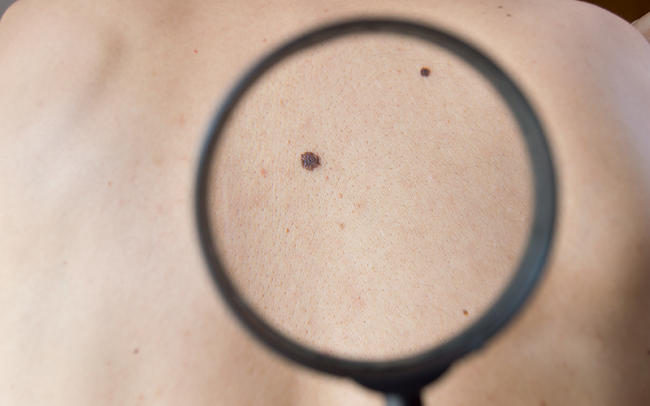Skin cancer is fairly common, and so is our tendency to underestimate how serious it can be. Learning the truth about skin cancer is the first step in preventing it.
Here’s a look at seven common myths — and the real truth — about skin cancer.
Myth No. 1: A tanning bed is safer than the sun.
Fact: New research shows that using a tanning bed or booth can actually be more dangerous than exposure to the sun. One study found that the amount of UVA radiation emitted from a tanning bed is four times higher than the sun at noon, and its UVB radiation was twice as high. There’s no such thing as a ‘safe’ tanning bed. Tanning booths and beds have been shown to increase the risk of melanoma, which is the deadliest form of skin cancer.
Myth No. 2: Skin cancer isn’t as dangerous as other forms of cancer.
Fact: While it’s true that skin cancer is very treatable if detected early, skin cancer still kills thousands of people every year. Melanoma is the most deadly form of skin cancer, but it’s not the only skin cancer that can be fatal. It’s not something to be taken lightly or ignored. It can have serious consequences.
Myth No. 3: People who can get a good tan or who have darker skin aren’t at risk for skin cancer.
Fact: In reality, any change in the color of your skin indicates sun damage.
“Every time you expose yourself to the sun and it changes the color of your skin, whether it’s a burn or a tan, the damage has been done. A tan is your body’s way of trying to protect itself from further damage,” says Dr. Clint Moss, who is also a board-certified dermatologist at U.S. Dermatology Partners Sherman. “That increases your risk of sun-related ailments, including skin cancer.”
And, even though fair-skinned people are at greater risk for sun damage and skin cancer, it happens to all races and skin colors.
“Skin cancer can occur in any skin type. People with darker skin sometimes feel they cannot get skin cancer, which can lead to delayed treatment and worse outcomes,” says Dr. Moss.
Myth No. 4: Your doctor can just cut off moles or sores before they turn into cancer.
Fact: That’s not always the case. If a mole changes color or shape, or if a sore doesn’t heal, it may already be cancerous. Early detection is key to keeping it from growing. It’s important to have an annual skin examination to catch any problems like that early. But if you have a suspicious sore or mole, you shouldn’t put off dealing with it, because you don’t know if it is cancerous or not. Make an appointment with a dermatologist right away.
Myth No. 5: Skin cancer only affects people after they get older.
Fact: According to the American Cancer Society, incidents of skin cancer are rising in both young men and women, but it is most rapidly increasing for women between the ages of 15 to 29. Even more alarmingly, melanoma has become the most common type of cancer in young adults ages 25 to 29. While it’s true that sun damage occurring as a child often doesn’t show up until later in life, today we are seeing more and more cases where young people are feeling the effects and consequences of sun damage much earlier.
Myth No. 6: You don’t need to use sunscreen on cloudy days or in winter.
Fact: Even when there are clouds in the sky, the sun can cause damage, which is why you should always cover up with sunscreen before leaving the house. And while it’s true that that the sun’s intensity is lower during the winter, that’s no reason to back off on sunblock.
“Even though the sun may not be as bright, it can reflect off the snow, much the same way it reflects off the water when you’re at a lake in the summertime,” Dr. Moss says. “This increases the chances it will seriously damage your skin.”
Myth No. 7: If you’re only going to be outside for a few minutes, you don’t really need to put on sunscreen.
Fact: The truth is, sun damage doesn’t just happen from long days spent in the sun; it can be cumulative from incremental exposure, too.
“Even those short times you spend outside — walking to and from your car in a parking lot, driving with a sunroof open or even going outside to get your mail or the morning paper count as sun exposure,” Dr. Moss says. “While not causing acute damage, over time it can add up.” In fact, there’s a strong link between this type of sun exposure and squamous cell cancer, which is responsible for about 20% of all skin cancer-related deaths.
Looking to Visit a Dermatologist?
To learn more about how to protect your skin from skin cancer or to schedule a skin exam, contact U.S. Dermatology Partners today to make an appointment with one of our board-certified dermatologists. We have multiple locations throughout the country, so fill out our simple online form to get in touch with us. One of our local team members will reach out to you shortly to answer your questions or schedule an appointment for you to visit us soon.
Find a location near me
or

